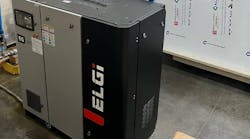It used to seem that a headline like the one for today’s column would freak everyone out that “robots are taking all of our jobs.”
However, low unemployment combined with dropping prices and increasing capabilities for robots has, to a great degree, silenced that cry—especially in logistics where companies are having a hard time with staffing (especially finding pickers) and where, in total, there are 600,000 open jobs industry-wide.
In logistics, robots can pay for themselves within three to nine months. With lower purchase prices, easier-to-configure robots, and greater capabilities of robots that can find their way around a building, even small and mid-size companies can now more easily deploy robots and gain a fast return.
So it’s no surprise that in logistics and warehousing, robots are taking a larger and larger role, at least partially due to their greater capability to find their way around a building.
As pointed out in Material Handling & Logistics, there are many types of robots available to help with distribution center/fulfillment center operation tasks today. They can assist with loading, unloading, sorting, picking, transportation, storage, delivery, and audits. They also use different forms of navigation tools such as rail, wire-guided, labels, magnet tape, laser, vision, geo-guidance, and others.
Two areas deserve special attention:
1. Picking
The trend away from case or bulk movement handling toward single SKUs has been accelerated due to e-commerce. These types of goods-to-person systems have taken the form of forward pick, racked systems that use robotic vehicles to bring cases and totes of goods to stations and then return the item container back into storage. There is also an increasing use of robotic machines to perform the picking process to detect, reach out, grasp, and place into receptacle items to fulfill an order.
2. Sortation
There have not been that many applications of robots doing item sortation in the U.S.
Up until now, AGVs (automated guided vehicles) have been used for case, pallet, bulk or specialized container movement for many years across a wide range of industries and applications.
However, there are now examples of AGVs that automatically read barcodes and then deliver items in a single pass to a designated order consolidation point.
Robotic automation can potentially extend the capacity, hours of operation, and life of a distribution/fulfillment center, and when combined with their increasing affordability and labor shortages, robots in logistics are more attractive and cost-justifiable than they were in the past.
So there is in fact no reason to fear the rise of the robots—at least in the case of logistics—as the robots are our friends.











